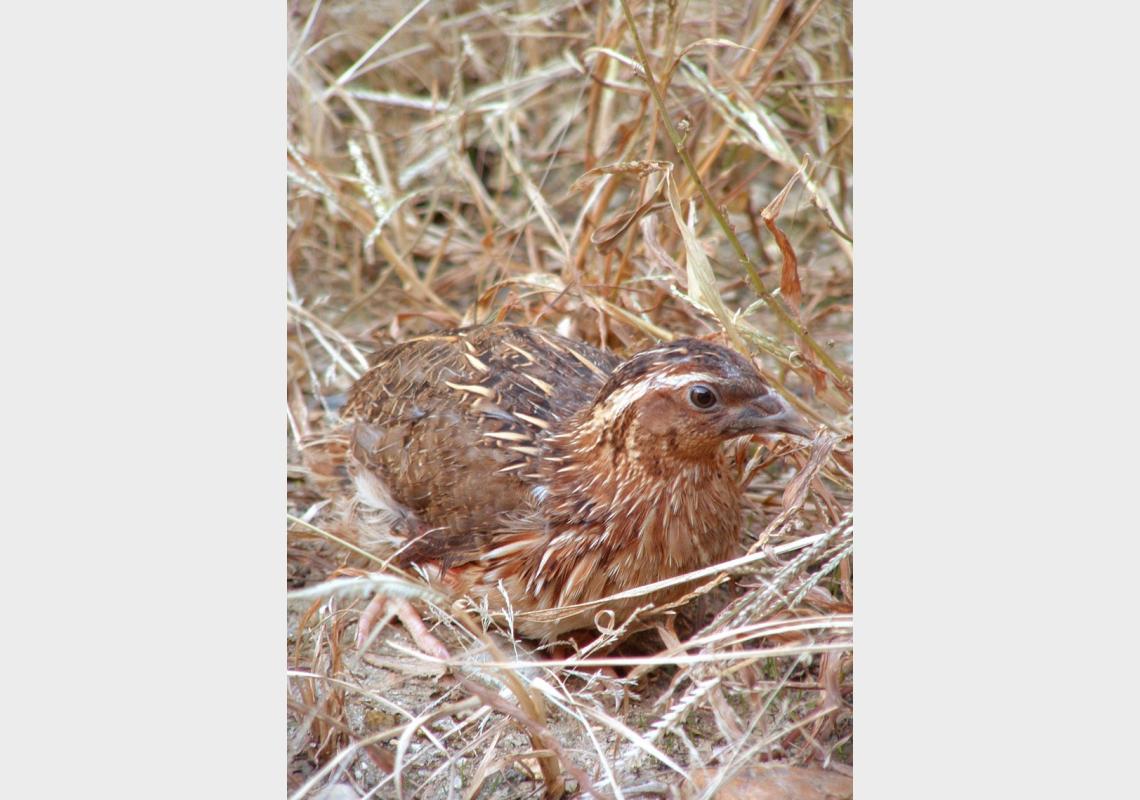At Nagoya University and the National Institute of Basic Biology, researchers have found a brain receptor that helps to initiate quail breeding. Meanwhile, researchers at Waseda and Kitasato universities are exploring the neurochemical link between male aggressiveness and the presence of females.
The Japanese quail is commonly used to study socio-sexual behaviours and their underlying mechanisms. Quail undergo rapid and robust sexual changes during their short breeding season, which happens in response to seasonal changes. Sexually mature male quail are also known to fight with intense aggressiveness, yet this aggression seems to decrease in the presence of female quail.
Deep brain photoreceptor
At Nagoya University’s Institute of Transformative Biomolecules (ITbM) and the National Institute of Basic Biology (NIBB), scientists have, for the first time, identified a receptor deep inside the brains of quail that directly detects light. This receptor plays an important role in regulating breeding activity according to changes in the seasons.
It has long been known that vertebrates, with the exception of mammals, can detect light deep inside their brains, independent of their eyes. More than 100 years ago, scientists trained blinded fish to come to the surface for food in response to light. Later research showed that the gonads of blinded ducks grew in response to their exposure to longer days. But despite many years of research, the true nature of the key receptor involved in this process remained a mystery until now.
Studies reported in Proceedings of the National Academy of Sciences in 2010 revealed the existence of a light-detecting receptor protein called Opsin-5 that was produced by nerve cells deep inside the brains of quail. There was no direct evidence, however, to show that these nerve cells were directly detecting light.
In a study published in Current Biology, researchers at ITbM and NIBB used special microelectrodes on brain slices to investigate the response of these nerve cells to light. They found that the cells were activated when exposed to light. When the researchers inhibited neurotransmitters (chemicals released by nerve fibres that transmit nerve impulses from one cell to another), the nerve cells still responded to light, suggesting they were detecting light directly. In a separate experiment, when Opsin-5 was inhibited in adult quail, the hormone that triggers spring breeding in birds was also inhibited.
Opsin-5 also exists in humans. The researchers believe their work will contribute to understanding how mammals regulate their biological clocks. It may also lead to improvements in animal breeding and provide a deeper understanding of the evolution of eyes and photoreceptors.
Building on this work, ITbM researchers are now applying the institute’s cutting-edge expertise in organic synthesis and catalysis to develop “transformative biomolecules” that significantly improve animal production and human health.
Quail love and the neurochemistry of male aggressiveness
Meanwhile, at Waseda and Kitasato universities, scientists are studying the neurochemical pathways involved in translating social signals into physiological reproductive changes.
In 2000, researchers at Waseda University identified for the first time a new hormone, called gonadotropininhibitory hormone (GnIH), located in the brains of quail that inhibits reproduction. This hormone has also been identified in mammals. The researchers found that nerves related to this hormone also projected to areas of the brain related to aggressive and sexual behaviours. This led them to further explore how the hormone was linked to aggression in male quail.
In one study, published in Nature Communications, the researchers injected the hormone into a male’s brain. They found that this increased the activity of an enzyme called aromatase that converts the male hormone androgen into the female hormone oestrogen. Oestrogen levels in the brain thus greatly increased. Also, when they injected high concentrations of oestrogen into a male’s brain, its aggressive behaviour greatly decreased.
In a separate study, published in The Journal of Neuroscience, the researchers analysed how the presence of female quail modifies both the reproductive hormones in a sexually active male, and the synthesis and release of neurochemicals in its brain. They found that when a male quail sees a female quail, this causes a rapid increase in the release of GnIH, resulting in the suppression of pituitary gonadotropins that stimulate the secretion of testosterone. The female’s presence thus rapidly decreases testosterone levels in the male quail. This is exceptional within most vertebrate species in which increases in testosterone levels usually follow interaction with a female.
In 2015, the researchers plan to explore how the presence of female quail modifies neurosteroid levels in the male brain, and investigate why the presence of a female decreases aggression and plasma testosterone levels. Ultimately, they say, future work involving the study of socio-sexual behaviours in humans could lead to new ways to regulate aggressiveness.
For further information contact:
Dr Takashi Yoshimura
(Brain photoreceptor)
Institute of Transformative Bio-molecules
World Premier International Research Center Initiative
Nagoya University, Japan
E-mail: [email protected]
Dr Kazuyoshi Tsutsui
(Love and aggression hormone)
Laboratory of Integrative Brain Sciences
Department of Biology
Waseda University, Japan
E-mail: [email protected]
*This article also appears in Asia Research News 2015 (p.24).



